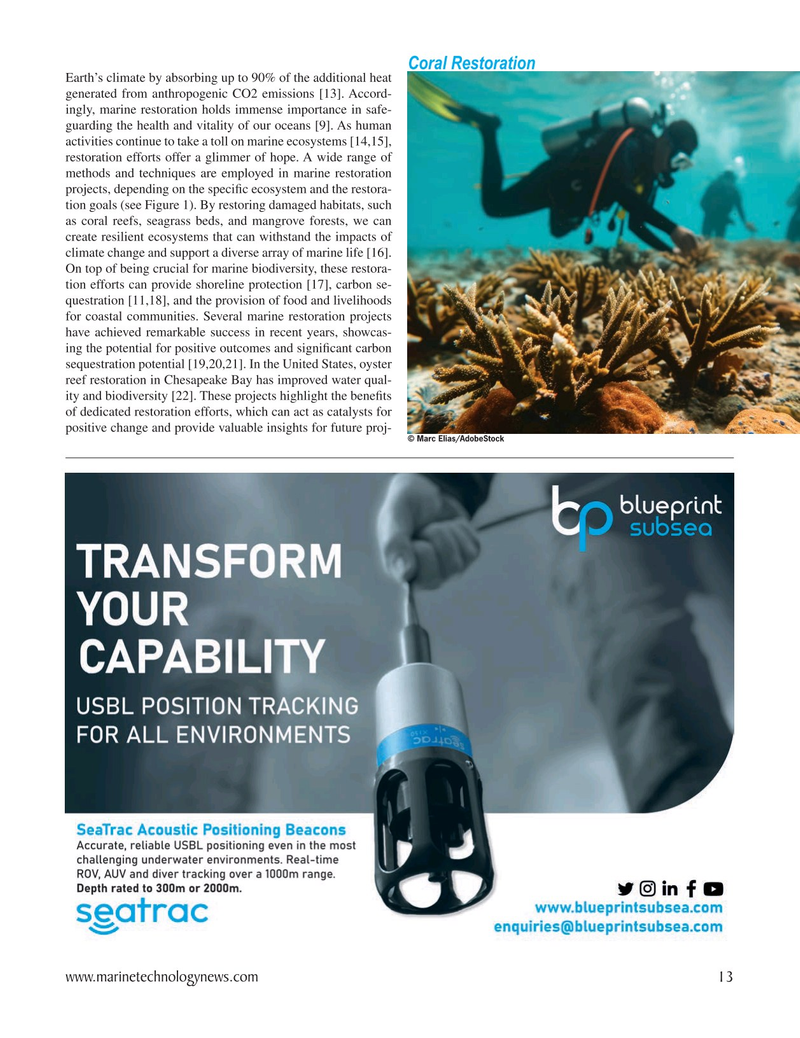
Page 13: of Marine Technology Magazine (July 2024)
Read this page in Pdf, Flash or Html5 edition of July 2024 Marine Technology Magazine
Coral Restoration
Earth’s climate by absorbing up to 90% of the additional heat generated from anthropogenic CO2 emissions [13]. Accord- ingly, marine restoration holds immense importance in safe- guarding the health and vitality of our oceans [9]. As human activities continue to take a toll on marine ecosystems [14,15], restoration efforts offer a glimmer of hope. A wide range of methods and techniques are employed in marine restoration projects, depending on the speci? c ecosystem and the restora- tion goals (see Figure 1). By restoring damaged habitats, such as coral reefs, seagrass beds, and mangrove forests, we can create resilient ecosystems that can withstand the impacts of climate change and support a diverse array of marine life [16].
On top of being crucial for marine biodiversity, these restora- tion efforts can provide shoreline protection [17], carbon se- questration [11,18], and the provision of food and livelihoods for coastal communities. Several marine restoration projects have achieved remarkable success in recent years, showcas- ing the potential for positive outcomes and signi? cant carbon sequestration potential [19,20,21]. In the United States, oyster reef restoration in Chesapeake Bay has improved water qual- ity and biodiversity [22]. These projects highlight the bene? ts of dedicated restoration efforts, which can act as catalysts for positive change and provide valuable insights for future proj- © Marc Elias/AdobeStock www.marinetechnologynews.com 13
MTR #5 (1-17).indd 13 7/23/2024 1:41:26 PM

 12
12

 14
14
